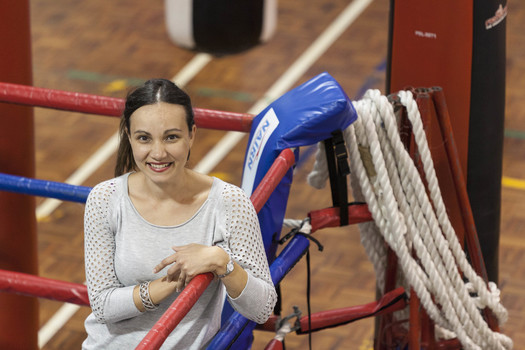What is it about an NRL heavyweight like Paul Gallen or a rugby star such as Quade Cooper that makes them shine inside the boxing ring as well as on the football field? Patrick Auld talks to Griffith University’s Caroline Riot about her research around this sporting code conundrum.
An ongoing research project into how and why elite athletes successfully transfer from one sport to another is being led by Griffith University’s Dr Caroline Riot.
An academic expert in sports management at Griffith Business School, Dr Riot teamed up with the Queensland Academy of Sport’s Centre of Excellence for Applied Sports Science Research for the study.
QAS provided Dr Riot with access to industry professionals, making sure she and her team had the necessary support and resources to undertake their investigation.
“We are aiming to find key athlete, coach and sport-related factors that contribute to successful talent transfer, and deliver this information to the relevant parties,” Dr Riot said.
“We are doing this by looking at talent transfer case studies as well as looking into current athletes and their coaches who are making transitions from one sport to another.”
The project began in May 2013 and continued throughout 2014, and into 2015.
The Centre of Excellence also provided Griffith honours student Elizabet Osk Gudmundsdottir with a full research scholarship for 2014, when she worked on a thesis in the talent transfer field.
As part of the study, Dr Riot and Professor Allan Hahn, who is serving as a consultant on the project, visited Canberra for a sports draft at the Australian Institute of Sport, where athletes from different sports gathered to try their hand at judo and boxing.
“It was a very innovative sports draft, and it was great to be able to observe the differences between the athletes who displayed aptitude for the new sports and those who didn’t,” she said.
The Boxing Shop at Griffith’s Nathan campus became a focal point of the study when it became to two athletes from the AIS Sports Draft, who have each come to boxing from different sports.
This provided Dr Riot with an on-campus data resource as she began to work with athletes and coaches.
“So far I have liaised closely with senior managers from the specific high performance sport organisations, as well as with coaches and sports scientists.”
Dr Riot said the results of this project may have strong educational implications too.
“What is really important from the Griffith perspective, apart from the research collaborations, is turning what we find into teaching material to use in the classroom.”
